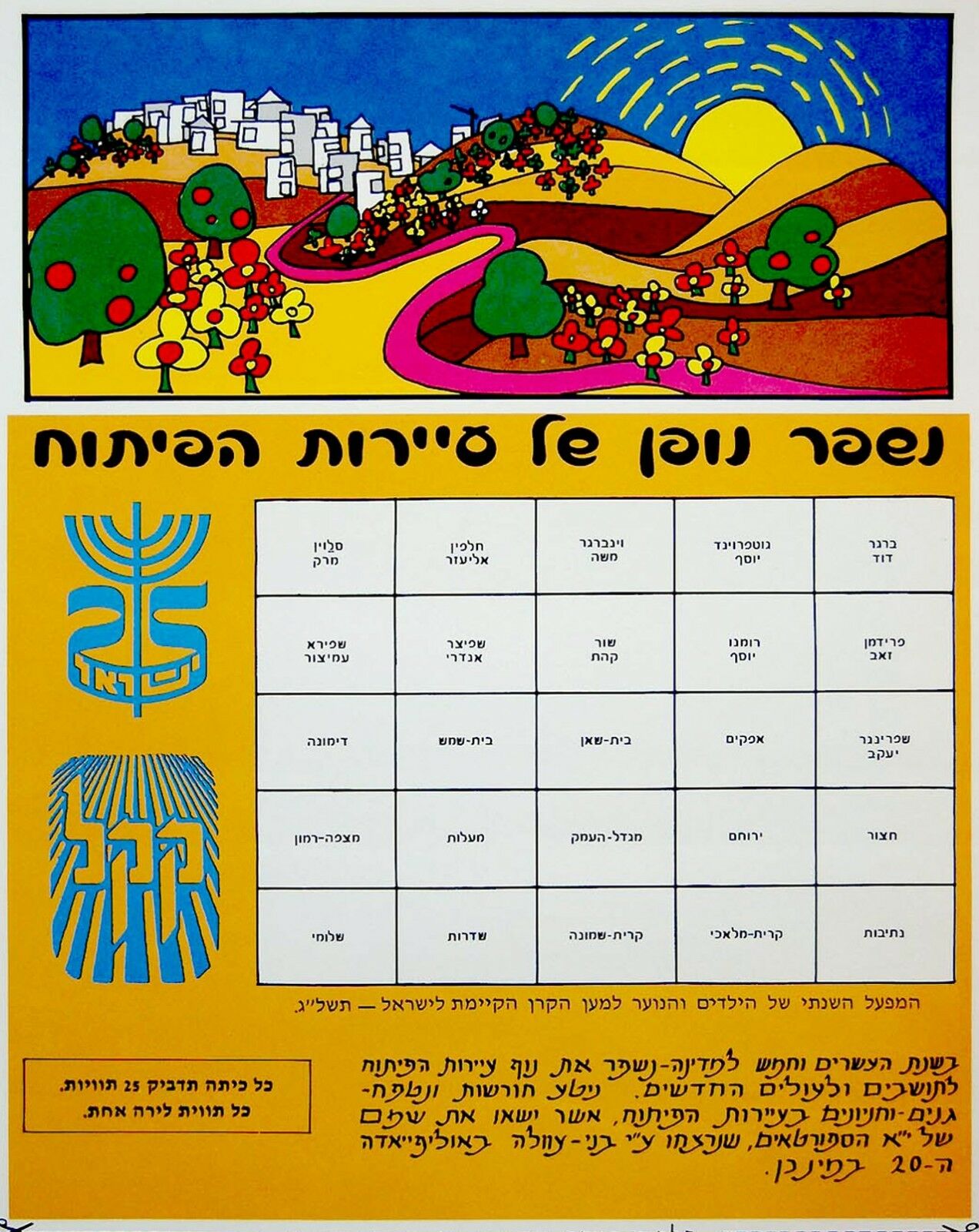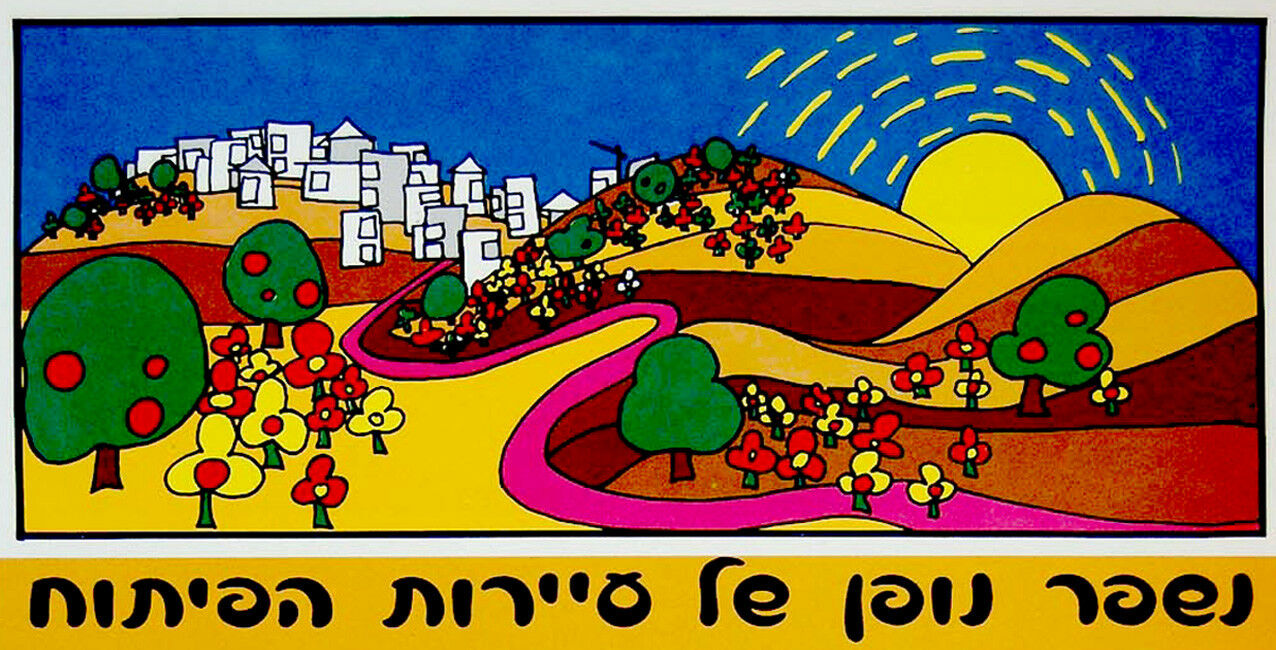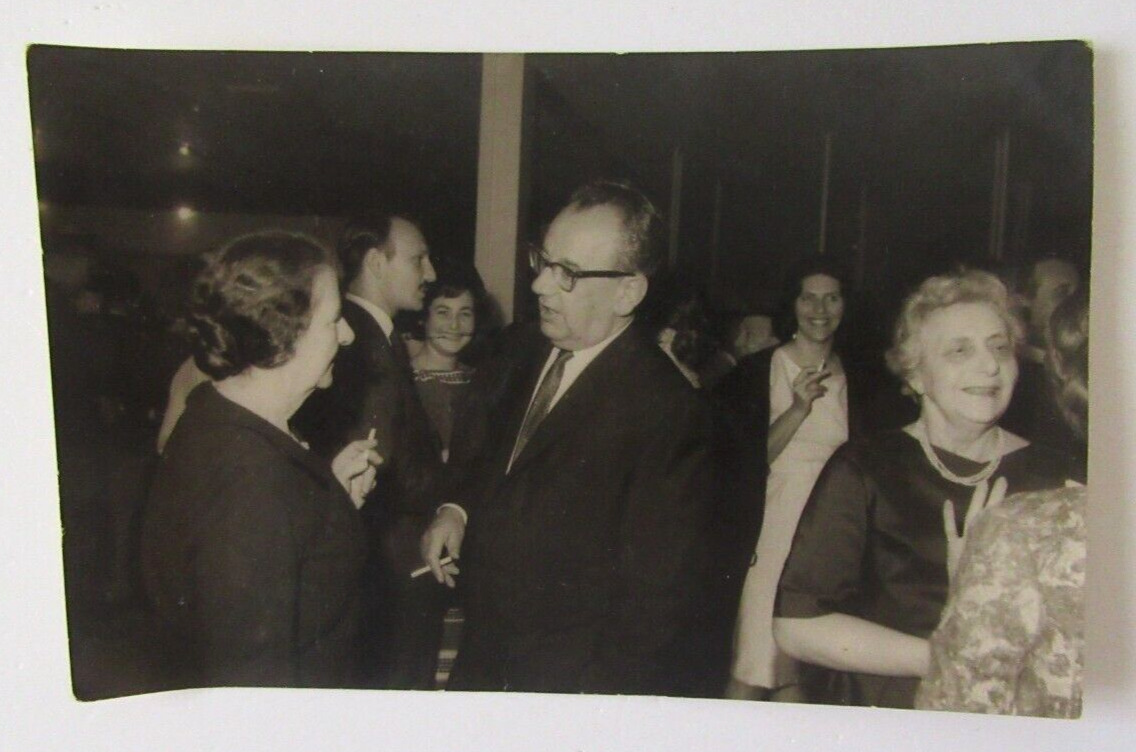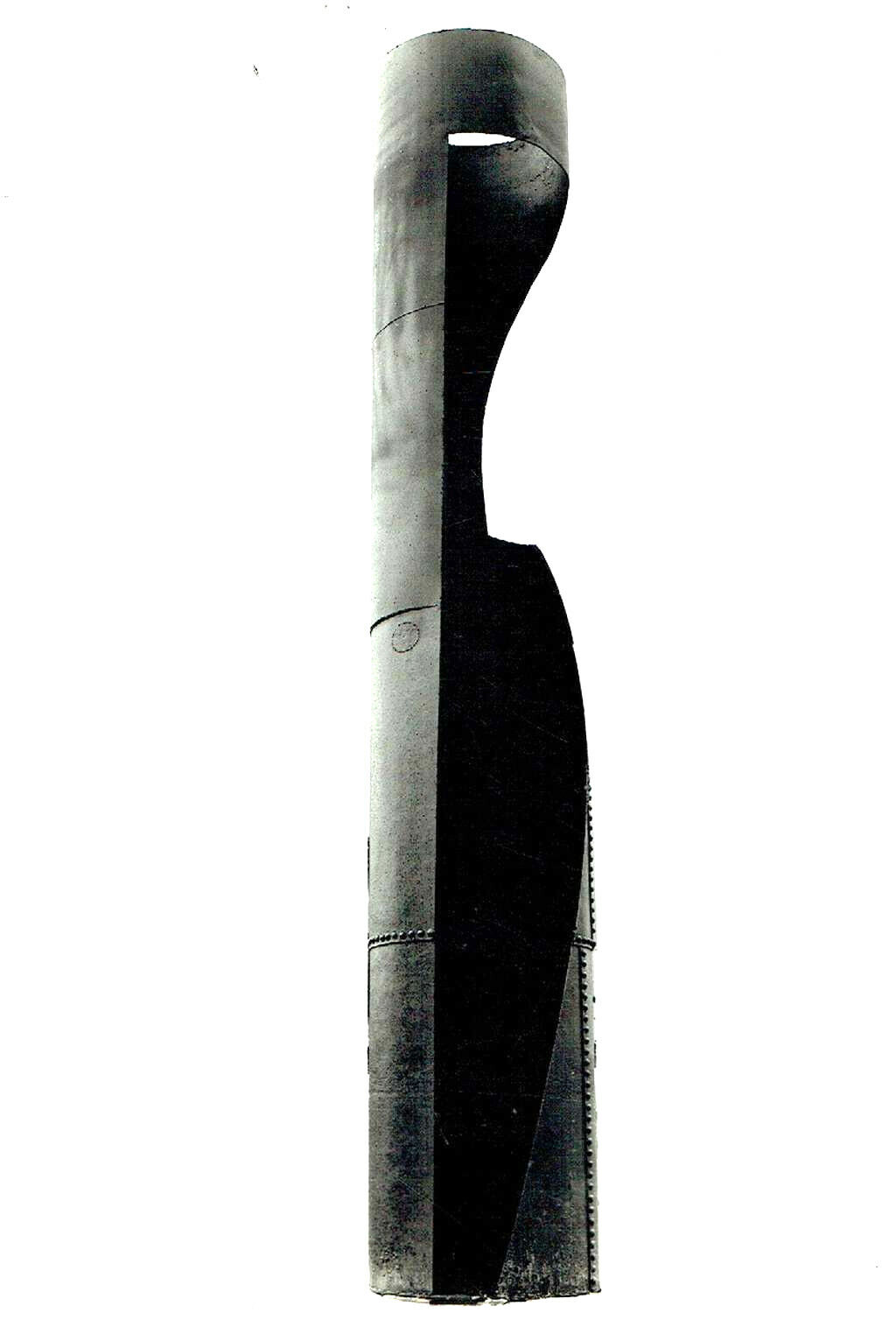-40%
1973 Jewish ZIONIST POSTER Israel DEVELOPMENT TOWNS Hebrew KKL JNF Judaica
$ 23.76
- Description
- Size Guide
Description
DESCRIPTION:
Here for sale is a genuine authentic RARE vintage
over
4
0
years old ZIONIST POSTER - BROADSIDE including the illustrated
view of a typical DEVELOP
MENT TOWN
. It was issued by the JNF ( Jewish National Fund ) - KKL ( Keren Kayemet Le'Israel ) in 19
73
( Fully dated Tashla"
G
) for the purpose of PROMOTING , ADVERTISING and ENCOURAGING the JEWISH SETTLEMENT in the DEVELOPMENT TOWNS under the slogan of " WE S
HALL IMPROVE THE LANDSCAPE OF THE DEVELOPMENT TOWNS
" , C
ollecting donations for the new Jewish-Hebrew DEVELOPMENT TOWNS in GALILEE and NEGEV , The poster also suggest the PLANTING of new FORESTS in the Development Town , Forest
s to commemorate
the brutal and cruel MASSACRE of the eleven JEWISH - ISRAELI SPORTMEN by ARAB - MUSLIM Palestinian TERRORISTS during the 1972 Summer OLYMPICS in Munich GERMANY .
The ILLUSTRATED picture of a typical DEVELOPMENT TOWN is accompanied by the EMBLEM - LOGO of the KKL - JNF , The SIGN - EMBLEM - BADGE of the 25th ISRAEL DAY OF INDEPENDENCE and an empty chart where the ISRAELI PUPILS should past LABELS - STAMPS according to their donations. The cha
rt includes the names of the main Develpment Towns ( Hereunder detailed ) and the names of the 11 Munich victims.
. The HEBREW heading for this JUDAICA POSTER is "
WE S
HALL IMPROVE THE LANDSCAPE OF THE DEVELOPMENT TOWNS
".
The poster SIZE is around
19
" x
13
" . The poster is printed on white paper . Excellent pristine condition. Unfolded
( Pls look at scan for accurate AS IS images )
The POSTER - BROADSIDE will be sent in a special protective rigid sealed envelope .
AUTHENTICITY
:
The poster - broadside comes from a KKL- JNF old wharehouse and is fully guaranteed ORIGINAL from 19
7
3
( Fully DATED ) , It is NOT a reproduction or a recently made reprint or an immitation , It holds a life long GUARANTEE for its AUTHENTICITY and ORIGINALITY.
PAYMENTS
:
P
ayment method accepted : Paypal.
SHIPPING
:
Shipp worldwide via registered airmail is $ 25 . Poster will be sent in a special protective rigid sealed envelope .
Handling around 5 days after payment.
Development towns (Hebrew: עיירת פיתוח) is a term used to refer to the new settlements that were built in Israel during the 1950s in order to provide permanent housing to a large influx of Jewish refugees from Arab countries, Holocaust survivors from Europe and new immigrants (Olim), who arrived to the newly established State of Israel. The towns were designated to expand the population of the country's peripheral areas and to ease development pressure on the country's crowded centre. The towns are the results of the Sharon plan - the master plan of Israel. The majority of such towns were built in the Galilee in the north of Israel, and in the northern Negev desert in the south. In addition to the new towns, Jerusalem was also given development town status in the 1960s. The sudden arrival of over 130,000 Iraqi Jews in Israel in the early 1950s meant that almost a third of Ma'abarah dwellers were of Iraqi Jewish origin. At the end of 1949 there had been 90,000 Jews housed in Ma'abarot; by the end of 1951 this population rose to over 220,000 people, in about 125 separate communities.Ma'abarot residents were housed in tents or in temporary tin dwellings. Over 80% of the residents were Jewish refugees from Arab and Muslim countries of Middle East and North Africa. The number of people housed in Ma'abarot began to decline in 1952, and the last Ma'abarot were closed sometime around 1963.Over time, the Ma'abarot metamorphosed into Israeli towns, or were absorbed as neighbourhoods of the towns they were attached to, and residents were provided with permanent housing. Most of the Ma'abarah camps transformed into development towns. Ma'abarot, which became development towns, include Kiryat Shmona, Sderot, Beit She'an, Yokneam, Or Yehuda and Migdal HaEmek.Establishment The first development town was Beit Shemesh, founded in 1950 around 20 km from Jerusalem. The newly established towns were mostly populated by Jewish refugees from Arab and Muslim countries - Morocco, Iraq, Iran, Egypt, Libya, Yemen, Syria and Tunisia. Development towns were also populated by Holocaust survivors from Europe and Jewish immigrants, who came to the newly established State of Israel. Beit Shemesh Or Yehuda Yavne Beit She'an Karmiel Hatzor HaGlilit Kiryat Shmona Migdal HaEmek Nazareth Illit Shlomi Yokneam Arad Dimona Kiryat Gat Kiryat Malakhi Mitzpe Ramon Netivot Ofakim Sderot Yeroham Galilee (Hebrew: הגליל HaGalil, lit: the province, Ancient Greek: Γαλιλαία, Latin: Galilaea, Arabic: الجليل al-Jalīl) is a large region in northern Israel which overlaps with much of the administrative North District and Haifa District of the country. Traditionally divided into Upper Galilee (Hebrew: גליל עליון Galil Elyon), Lower Galilee (Hebrew: גליל תחתון Galil Tahton), and Western Galilee (Hebrew: גליל מערבי Galil Ma'aravi), extending from Dan to the north, at the base of Mount Hermon, along Mount Lebanon to the ridges of Mount Carmel and Mount Gilboa north of Jenin and Tulkarm to the south, and from the Jordan Rift Valley to the east across the plains of the Jezreel Valley and Acre to the shores of the Mediterranean Sea and the Coastal Plain in the west. Ranges of hills with high peaks, one river, many streams, dozens of brooks, primal landscapes, evergreen forests, dense natural groves, valleys, lakes, few residents and many hikers and tourists are what make the Galilee so special. The Galilee is a mountainous region in Israel’s north, and is divided into two main parts - the Upper Galilee to the north and the Lower Galilee to the south. The highest peak in the Upper Galilee is Mt. Meron, which rises 1,208 meters above sea level, while the highest point in the Lower Galilee is the summit of Mt. Kamon, at 602 meters above sea level. Thanks to the abundant water and the fertile soil in the Galilee’s valleys, this region has been relatively densely populated since ancient times and today has the largest variety of ethnic communities in Israel. There are Druze villages (Beit Jan, Peki’in) and Circassian (Reikhaniya, Kfar Kama) who preserve their ancient traditions; there are Arab villages with Muslim majorities (Kafr Yasif) or Christian majorities (Fasuta), or some with an equal balance (Ma’alot Tarkhisha). The Galilee is one of Israel’s main tourism centers, with dozens of different types of sites. For example, there are national antiquities parks (including Bar’am, Tsipori (Zippori), Beit She’arim, Monfort and Kohav Hayarden); moshava farming communities from the early days of the modern settlement of Israel, which tell the story of Zionism (Metula, Yesud Ha-Ma’ala, Rosh Pina); beautiful nature reserves (Hul Lake, Mt. Meron, Bar’am Forest, Nahal Kziv and many more); Jewish holy sites, such as the graves of the sages and ancient synagogues (in Safed (Tsfat) and Tiberias); and Christian holy sites that are visited by many pilgrims during their tour of the Holy Land (Nazareth, Kfar Nahum (Capernaum), the Jordan River and Lake Kineret).The large concentration of sites, the natural beauty and the breathtaking landscapes are what make the Galilee so unique. It has even been nicknamed the Israeli Tuscany or Provence. Either way, the Galilee is a fascinating area that offers dozens of touring and entertainment options. The Jewish National Fund (Hebrew: קרן קימת לישראל, Keren Kayemet LeYisrael) (abbreviated as JNF, and sometimes KKL) was founded in 1901 to buy and develop land in Ottoman Palestine (later British Mandate for Palestine, and subsequently Israel and the Palestinian territories) for Jewish settlement. The JNF is a quasi-governmental, non-profit organization.By 2007, it owned 13% of the total land in Israel. Since its inception, the JNF has planted over 240 million trees in Israel. It has also built 180 dams and reservoirs, developed 250,000 acres (1,000 km) of land and established more than 1,000 parks.In 2002, the JNF was awarded the Israel Prize for lifetime achievement and special contribution to society and the State of Israel. ebay1516














